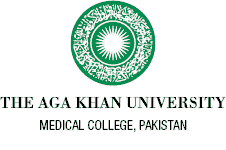Differences of sex development (DSD)
Disorders of sex development (DSD) are a group of rare conditions in which the reproductive organs and genitals do not develop as expected.
These conditions can affect the chromosomal, gonadal, or anatomical sex development. DSD can be diagnosed in children at birth when a baby is born with genitals that appear to be neither clearly male nor female(atypical /ambiguous genitalia), or with a combination of male and female features or later in life, and it can pose challenges related to physical and psychological well-being. This can be due to a variety of factors, including genetics, hormones, and environmental factors.
DSDs are relatively common, affecting about 1 in 150 to 1 in 200 births. However, many people with DSDs are not diagnosed until puberty or later, as their genitals may not appear atypical until then.
There are many different types of DSDs, each with its own unique set of signs and symptoms. Some of the most common types of DSDs include:
1. Ambiguous Genitalia: In some cases, a child's genitals may not have the typical appearance of either male or female organs.
2. Gonadal Dysgenesis: This occurs when the gonads (ovaries or testes) do not develop properly.
3. Ovotesticular DSD: This refers to individuals with both ovarian and testicular tissue.
4. Androgen Insensitivity Syndrome (AIS): Individuals with AIS have XY chromosomes but are partially or completely insensitive to male hormones (androgens). They may have female external genitalia despite having male chromosomes.
5. Congenital Adrenal Hyperplasia (CAH): CAH is a group of genetic endocrine disorders that affects the adrenal glands, leading to abnormal hormone production including sex hormones. Too much or too little of certain sex hormones, can lead to the development of atypical genitalia.
6. Turner Syndrome: Girls with Turner syndrome have a missing or partially absent X chromosome, leading to underdeveloped ovaries and other health issues.
7. Klinefelter Syndrome: Boys with Klinefelter syndrome have an extra X chromosome (XXY), leading to underdeveloped testes and other physical and developmental differences.
There is no one-size-fits-all treatment for DSDs. Diagnosis and management of DSD involve a multidisciplinary approach, including genetic testing, hormone therapy, and, in some cases, surgery to reconstruct or modify the genitals. Psychosocial support for both the child and their family is also crucial in managing the challenges associated with DSD.Treatment will vary depending on the specific type of DSD and the individual's needs
It is important to note that DSDs are not a disease. They are simply a variation of human sex development. People with DSDs can live healthy and fulfilling lives.
It's important to note that the understanding and management of DSD have evolved over time, and individuals with DSD should receive care from experienced healthcare providers, such as pediatric endocrinologists and geneticists, who are knowledgeable about the latest advancements in the field.


